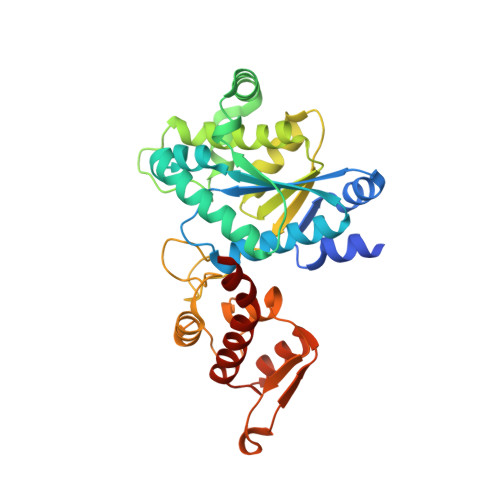Site-Resolved Observation of Vibrational Energy Transfer Using a Genetically Encoded Ultrafast Heater.
Baumann, T., Hauf, M., Schildhauer, F., Eberl, K.B., Durkin, P.M., Deniz, E., Loffler, J.G., Acevedo-Rocha, C.G., Jaric, J., Martins, B.M., Dobbek, H., Bredenbeck, J., Budisa, N.(2019) Angew Chem Int Ed Engl 58: 2899-2903
- PubMed: 30589180
- DOI: https://doi.org/10.1002/anie.201812995
- Primary Citation of Related Structures:
5NSF - PubMed Abstract:
Allosteric information transfer in proteins has been linked to distinct vibrational energy transfer (VET) pathways in a number of theoretical studies. Experimental evidence for such pathways, however, is sparse because site-selective injection of vibrational energy into a protein, that is, localized heating, is required for their investigation. Here, we solved this problem by the site-specific incorporation of the non-canonical amino acid β-(1-azulenyl)-l-alanine (AzAla) through genetic code expansion. As an exception to Kasha's rule, AzAla undergoes ultrafast internal conversion and heating after S 1 excitation while upon S 2 excitation, it serves as a fluorescent label. We equipped PDZ3, a protein interaction domain of postsynaptic density protein 95, with this ultrafast heater at two distinct positions. We indeed observed VET from the incorporation sites in the protein to a bound peptide ligand on the picosecond timescale by ultrafast IR spectroscopy. This approach based on genetically encoded AzAla paves the way for detailed studies of VET and its role in a wide range of proteins.
- Institut für Chemie, Technische Universität Berlin, Müller-Breslau-Str. 10, 10623, Berlin, Germany.
Organizational Affiliation:




















